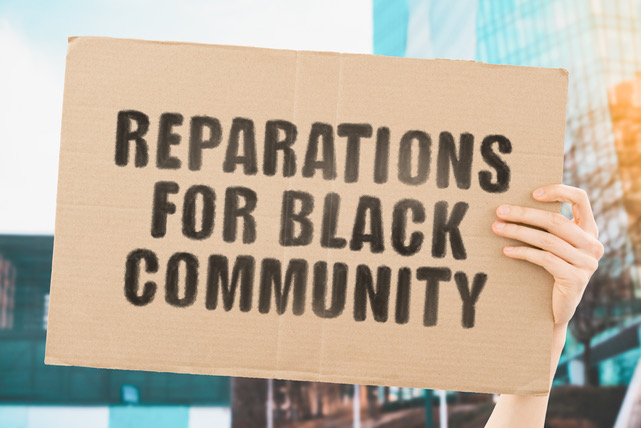
State Leaders Urge Employers to Address Persisting Racial and Gender Pay Gaps
Antonio Ray Harvey | California Black Media
(CBM) – State leaders concerned about the persisting gap between the incomes of Black and White Californians are urging the state to take steps to address the problem.
On Sept. 18, International Equal Pay Day, the California Civil Rights Department (CRD) released new pay and demographic data that show Black workers are more likely to be found in the lowest pay range in the state, earning, on average, $32,239 a year or less.
“While I am proud that California has one of lowest gender pay gaps in the nation, pay for women and communities of color remains among the state’s lowest for paid workers,” said California Business, Consumer Services and Housing Secretary Tomiquia Moss at a news briefing in Sacramento organized to share the data.
“The latest employee pay data show we still have work to do and, more importantly, shows exactly where employers can focus their efforts to realize opportunity and success for all Californians,” Moss added.
The CRD research is based on data collected from large employers in 2022, covering about 8.3 million workers across the state. While the state presents some of the nation’s strongest equal pay laws and one of the smallest gender-pay gaps in the nation, its third annual report of large employer pay data shine a light on the fact there needs to be more equity when it comes to the income of women and communities of color.
The CRD is the state agency charged with enforcing California’s civil rights laws. Its mission is to protect Californians from unlawful discrimination in employment, housing, businesses, and state-funded programs, and from racial-motivated violence and human trafficking.
According to the CRD’s data, Black (45%), multiracial (45%), Latino (44%), and Native American (43%) workers were among those in the lowest pay range. In contrast, about a quarter of White workers (25%) and close to one-fifth of Asian workers (19%) were in the lowest pay range.
In addition, the report explains that less than 1 in 20 Latinos, and 1 in 10 Black and Native American workers were in the top-earning positions, whereas nearly 1 in 4 White workers and 1 in 3 Asian workers were employed in the highest pay range.
White workers were almost twice as likely to be senior executives (62%) as compared to workers of color. California ranks third in the country for difference between men’s and women pay (13.3%), according to the report.
CRD Director Kevin Kish stated that gender pay gaps can have an ongoing effect “over the course of a single person’s lifetime,” and that difference in income can add up to hundreds of thousands of dollars in lost wages
“The data underscores the need for action. “We all need to do our part to build on our hard-won progress,” Kish stated. “From corporate boardrooms to small, family-owned businesses, I urge employers to look at their own practices and work with us in the fight to ensure equal opportunity on the job.”
Data about workers hired through labor contractors is not included, the CRD points out. The findings in the report do not reflect California’s entire employed workforce, which the U.S. Bureau of Labor Statistics estimated to be 18.4 million at the end of 2022.
Under state law, private job creators of 100 or more employees or workers hired through labor contractors are required to report pay, demographic, and other workforce data annually.
“We all share the responsibility to address the persistent inequality that affects communities up and down our state,” Moss emphasized.
Kellie Todd Griffin, President and CEO of the California Black Women’s Collective Institute Empowerment Institute (CBWCEI), said Black women’s pay in California has not only stagnated – it is decreasing.
A CBWCEI report released earlier this year reveals that Black women’s labor force participation rate (LFPR) fell three percentage points between October and December of 2023. Although, Black women’s LFPR remains higher than the LFPR of women of other races, the decrease points to job insecurity and instability in the labor market. It is also a sign that conditions could get worse for the Black women overall.
“Several economic factors contribute to the fluctuations and potential decline in Black women’s labor force participation rates,” CBWCEI report stated. “Structural issues such as persistent wage gaps, limited access to quality education and job training programs, along with systemic barriers to career advancement disproportionately affect Black women.”
As a result of the passage of Senate Bill (SB) 973 in 2020, the state collects pay data to encourage employers to conduct self-assessments of pay disparities in their organizations, promote self-policing around equal pay compliance and support meaningful state and private enforcement of civil rights and anti-discrimination laws in the workplace.
On June 19, the CRD announced that it reached a $15 million settlement with Snapchat to resolve a more than three-year investigation over claims of employment discrimination, equal pay violations, and sexual harassment and retaliation.
CRD alleged that despite its growth from 50 employees in 2015 to over 5,000 in 2022, Snap Inc., Snapchat’s parent company, failed to set up measures to create an environment to ensure that women were paid or promoted equally. Instead, women were held under a glass ceiling and were told to wait in line.
“The gender wage gap is not just a statistic, it’s a lifetime of missed opportunities for women — especially women of color — who face the compounded impacts of racial and gender inequities,” stated California First Partner Jennifer Siebel Newsom. “The wage and wealth gaps rob women and their families of financial security, career advancement, and the ability to build wealth for future generations. In California, we’re working through our Equal Pay Pledge to close the gap and normalize pay equity.”





